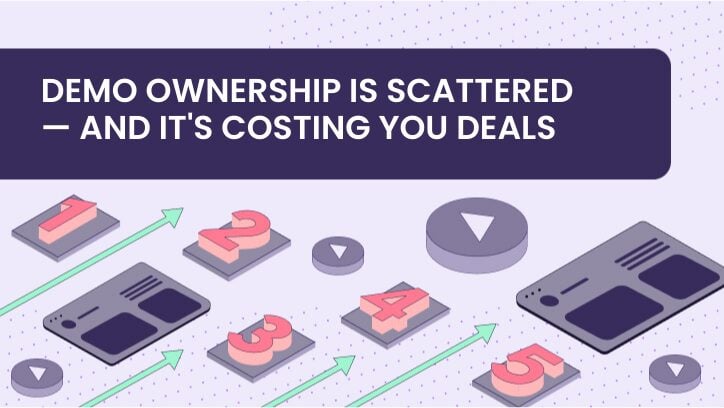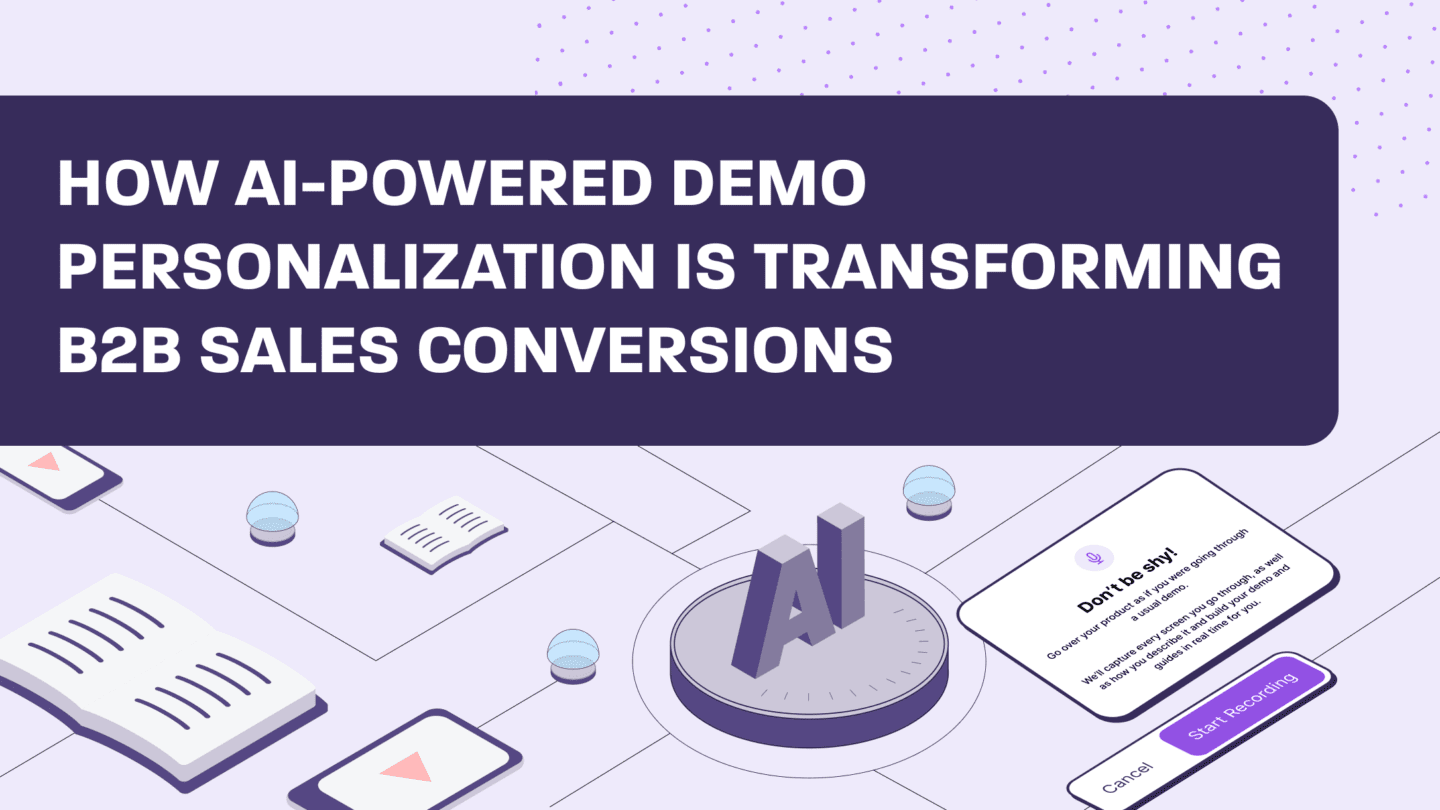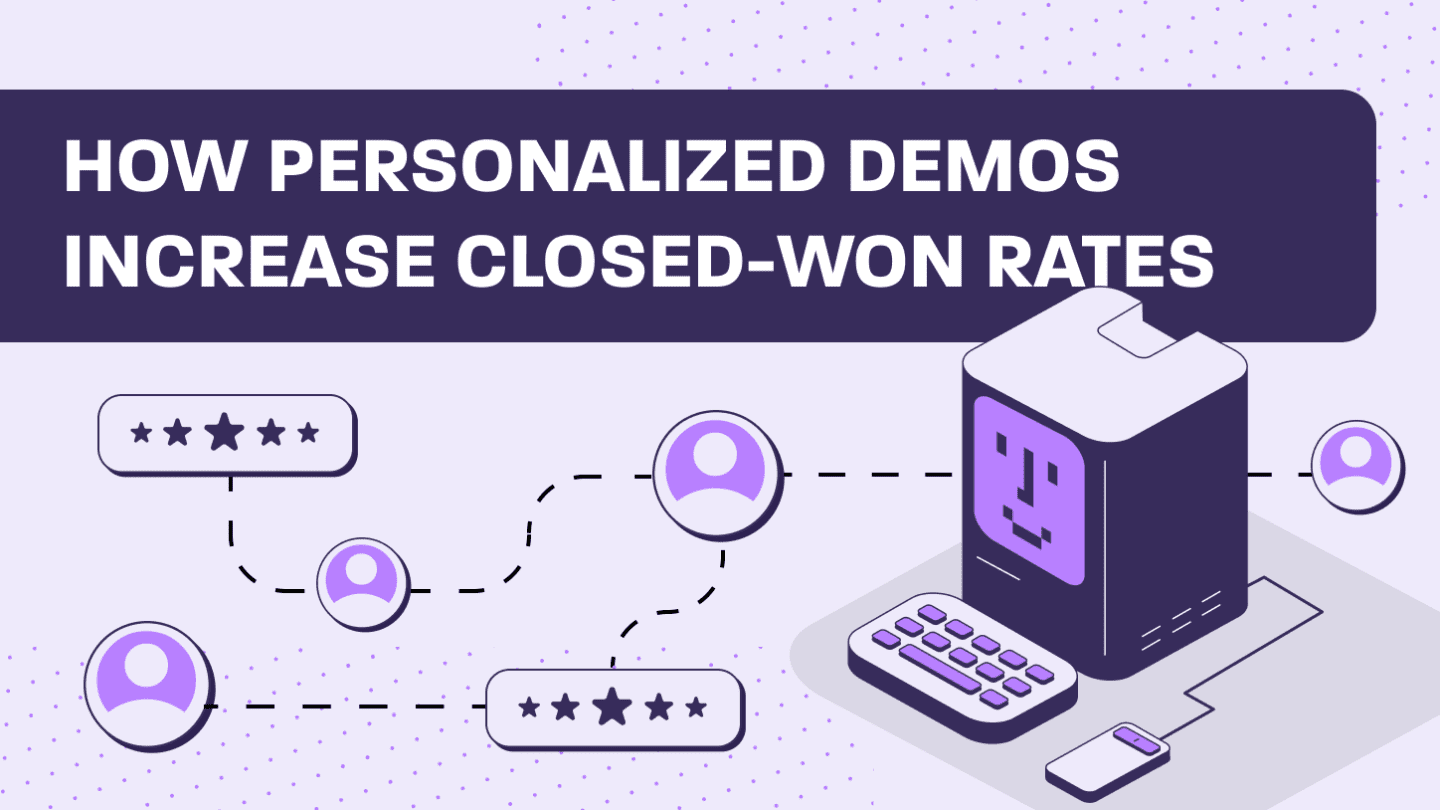Most SaaS organizations maintain a wild west approach to who operates the product demonstration process. In our latest research, 50% of teams report being understaffed and 44% run AE:SE ratios of 5:1 or worse—a setup that almost guarantees inconsistency and last-minute firefighting. Meanwhile, 7 in 10 organizations still rely on generic tools for demos, making it even harder to scale a clear, consistent story across roles.
Some organizations have their Solutions Engineers (SEs) take complete charge of every technical walkthrough. The first demo of the deal falls under the responsibility of Account Executives (AEs) but Solutions Engineers (SEs) become involved only when the deal advances to a certain point.
The initial perception of this approach shows signs of flexibility. But in practice? It’s creating chaos.
The key results that determine demo success are
Outcomes that Matter When Demos Are Intentionally Orchestrated
- The buyer experiences remain consistent when the product story remains unified which builds trust while minimizing confusion.
- The sales and technical teams maintain aligned expectations through their unified presentation which helps the buyer grasp both the value proposition and technical fit.
- Solutions Engineers dedicate their time to technical interactions while Account Executives deliver initial demonstrations without wasting resources.
- A well-defined narrative in the demo serves as a powerful tool which effectively connects with potential buyers.
- The product story presented in a consistent manner results in higher conversion rates.
If you need proof that SEs move revenue, our study found 74% of leaders strongly agree the SE function directly helps win deals. That makes consistency across AE- and SE-led demos a revenue imperative—not a nice-to-have.
What Happens When No One Truly Owns the Demo?
Inconsistent buyer experiences
The product story presented by each representative contains different elements with some focusing on outcomes and others on features. The absence of standardization creates confusion among buyers which prolongs the development of trust.
Misaligned expectations
AEs focus on maintaining the process speed and qualification process. SEs focus on technical fit. The lack of coordination leads to demo fragmentation that forces the buyer to create their own understanding. This fragmentation persists long after the call when there is no shared, trackable leave-behind—especially common in teams using generic tools and manual prep.
Wasted internal effort
Solutions Engineers get pulled in at the last moment to perform emergency demos of products that have lost their direction. The worst part is when the SE must duplicate content that the AE has already shown. Reactive firefighting represents a far cry from what scale entails. It also steals time from the moments where SEs create the most leverage, including the post-sale phase—where 32% of SEs remain involved to accelerate time-to-value and expansion.
Why This Matters More Than Ever
The sales environment today requires the demo to serve beyond its traditional function as a feature tour. Your demo is your primary storytelling asset. Your narrative breaks down when ownership remains uncertain. And buyers notice.
“Our sales team failed to convey what we should find interesting about the product. Each discussion required starting over from scratch.” — Mid-market SaaS Buyer
If this sounds familiar, download the full analysis and benchmarks in the Demo Workflow Trends Report.
Fix It With Strategic Demo Orchestration
The solution to scattered demo ownership needs a strategic approach which avoids both top-down control and rigid centralized demo creation. The approach promotes process democratization by allowing teams to create demos while providing necessary tools and frameworks to deliver a scalable value narrative consistently.
This approach maintains both flexibility and consistency to let any rep SE or SC effectively present your product without straying from the core message. High-performing teams have developed the following solution to address this issue:
- The definition of demo stages should depend on which role performs them. The technical deep dive? The interactive leave-behind? The definition should include all demo stages. Put it in writing.
- A standardized narrative exists through templatized demos that enable reps to personalize content without straying from the established script.
- The system should track all interactions including shown content and shared materials and clicked elements throughout the deal process. The approach enables continuous demonstrations and helps identify buyer engagement signals.
For more benchmarks and recommended operating models, get the full Demo Trends Report.
TL;DR
The lack of ownership among team members results in no clear narrative leadership. A consistent high-converting product narrative requires treating demos as team sport through clear plays and coordinated roles and shared tools that enable AEs and SEs to perform at their best.
Ready to Bring Order to the Demo Chaos?
The Walnut platform enables you to control demo ownership while creating standard product narratives which enable all reps including technical and non-technical staff to perform successful demo conversions.
Build once. Personalize endlessly. Scale with confidence.
Book your personalized Walnut demo and get the research behind these recommendations in the Demo Workflow Trends Report.





